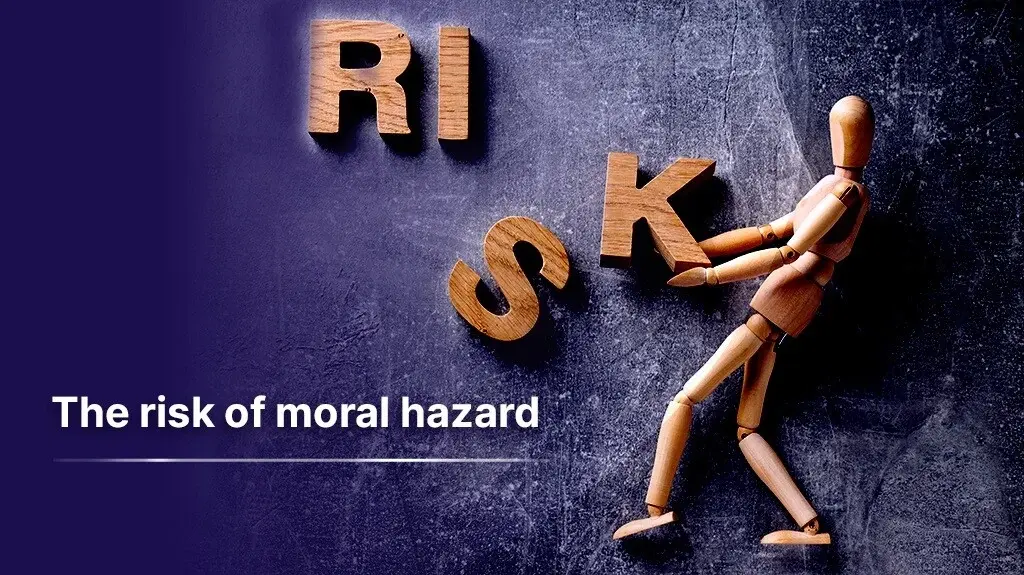Fraud can disrupt the operations of any business, regardless of its size, and there are numerous different examples of insurance frauds that can have negative repercussions. In fact, an ACFE study estimates that fraud accounts for 5% of the loss in income for businesses annually. Globally, fraud costs businesses around $3.7 trillion every year.
Shedding Light on Insurance Frauds Examples that Affect Small Businesses
That said, smaller businesses are often hit harder by fraudulent activities. It can threaten their survival by destroying the confidence that various stakeholders have in them. One type of fraud that plagues small businesses is insurance fraud, when bad actors intentionally deceive businesses for financial gain.
Here's an outline of the examples of insurance frauds that small business owners need to be familiar with to better protect their organizations.
1. Workers' Compensation Fraud
Workers' compensation is one of the most common examples of insurance frauds affecting small businesses. Most businesses provide workers' compensation insurance for the benefit of their staff. It provides compensation if workers get injured while undertaking their tasks.
Unfortunately, some employees cheat the system for their personal benefit. So it's no wonder that roughly 13% of business owners have concerns that their employees would commit workers' compensation fraud.
Some employees can fake an illness or even exaggerate a workplace injury. Others suffer injuries during off-hours but then report that they suffered the injuries while at work so that they can claim under their workers' compensation policy. When this happens, these employees stay out of work and have their medical expenses settled by their employer's insurer.
Some of the red flags of a workers' compensation fraud include:
- The injured employee suffered the injury with no witnesses present.
- The employee suffers from a subjective injury such as stress, insomnia, or emotional trauma that is hard to prove.
- The first notice of the employee's injury is from a medical provider or lawyer, not the employee.
- The opinions of the physicians who examined the employee differ vastly regarding the extent of the injury.
- The employee suffered the injury in a location where they would not normally be, or the task that led to the injury is one that the employee is usually not involved in.
But businesses can avoid this type of scam by ensuring that the workplace is safe, providing their employees with all the safety gear they need, and educating their employees on workplace safety. Insurers should also leverage AI to detect and minimize workers' compensation fraud using predictive solutions. When insurers use these tools, they can identify fraudulent claims early and save small businesses thousands of dollars.
2. Healthcare Coverage Fraud

Healthcare coverage fraud is almost similar to workers' compensation fraud. It comes about when employees falsify injuries or any aspect of their claim with the intention of making an accident eligible for coverage. There are numerous ways employees can commit healthcare coverage fraud. These include:
- Filing multiple claims for the same injury
- Altering an insurance claim
- Fabricating information on an insurance form
Employees can either use hard fraud or soft fraud to facilitate the receipt of the benefits to which they aren't entitled. Hard fraud refers to the deliberate destruction of a piece of business property to make a claim appear valid. This may entail harming oneself on purpose in order to claim health coverage. Conversely, soft fraud involves the fabrication or exaggeration of a claim without causing any harm to company property.
To combat healthcare coverage fraud, employers should establish guidelines. They should also enlist the services of insurance experts in identifying employee healthcare coverage fraud.
3. Commercial Liability Fraud
Another example of insurance fraud is commercial liability fraud. Every business, regardless of size, location, or industry, can become a victim of commercial liability fraud. This type of insurance fraud manifests itself in various ways, including:
- Alteration or forgery of drafts, promissory notes, checks, or similar instruments
- Loss of money both on- and off-premises due to theft
- Burglary, robbery, or damage of business infrastructure/property
- Issuance of counterfeit money by fraudulent clients after receiving goods from a business
4. Fraud Against Small Businesses by Insurance Agents
Insurance agents have numerous opportunities to defraud small businesses. Some examples of insurance frauds they can commit include developing fictitious policies, fabricating statements, and diverting settlement checks. Here's a look at other ways agents can defraud businesses:
- Churning: This is a scenario whereby an insurance agent persuades a business that they should obtain additional coverage by utilizing the build-up value present in the business's original policy.
- Sliding: This is a situation in which an agent packs a policy with additional coverages that aren't needed by a business so they reap a larger commission as a result.
- Twisting: This refers to a scenario where an insurance agent replaces a policy with a new one, so the insurer charges higher premiums.
Preventing such forms of fraud requires that small business owners exercise caution when purchasing an insurance policy. Failure to do this may lead to their businesses incurring huge losses.
5. Property and Casualty Fraud
Another common example of insurance fraud is the property and casualty scam. This type of insurance scam has been in existence for many years. Small businesses can fall victim to it when they let their guard down. Property and casualty fraud can manifest in different ways, including overstated losses, claims on property that don't exist, and slip and fall accidents.
An example of this insurance fraud is a restaurant receiving a lawsuit notice from an individual who claims to have slipped on water that was left recklessly in the lobby, resulting in them falling and injuring their back. In some instances, businesses may be forced to settle such claims, even when there is no substantial evidence.
How to Improve Fraud Detection
Now that we have looked at the common examples of insurance frauds that cost small businesses, how can we enhance fraud detection to prevent them? Using AI-powered insurance solutions can help you towards this end.
Pilotbird's AI-powered fraud analytics insurance solutions enhance fraud detection and reduce claim leakage, consequently decreasing the cost of insurance fraud. Our solution helps insurance teams to better score risk and identify fraud by analyzing social data points. Contact us to get started with Pilotbird's fraud analytics insurance solutions today.
Sources About Common Examples of Insurance Frauds
- Crime+Fraud. Background on: Insurance Fraud.
- Wolters Kluwer. (2019, June 6). Small Businesses Should Be Wary of Various Insurance Scams.
- UTICA University. Top 6 Fraud Risks for Small Businesses.
- Goldberg, S. (2015, July 17). Small business owners struggle with workers comp fraud.
- Stockton, G. (2018, November 12). Global Fraud Costs Businesses $3.7 Trillion Annually.
- ACFE. Report to the Nations. 2020 Global Study on Occupational Fraud and Abuse.
- Mitic, I. (2022, March 10). The Fraudster Next Door: 30 Insurance Fraud Statistics.
- Burton Copeland. 5 most common examples of insurance fraud.




Leave a Comment
Your email address will not be published. Required fields are marked *